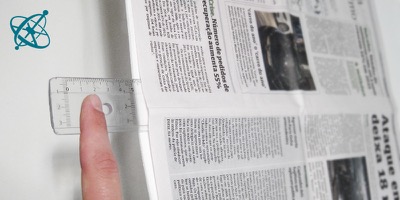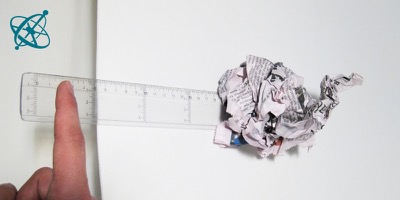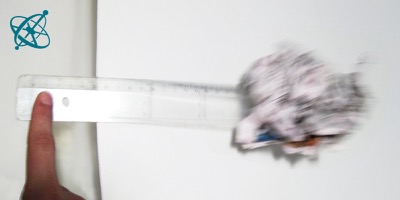 www.sciensation.org | Ciênsação hands-on experiments are published as Open Educational resources under a Creative Commons Attribution-ShareAlike 4.0 International License.
www.sciensation.org | Ciênsação hands-on experiments are published as Open Educational resources under a Creative Commons Attribution-ShareAlike 4.0 International License.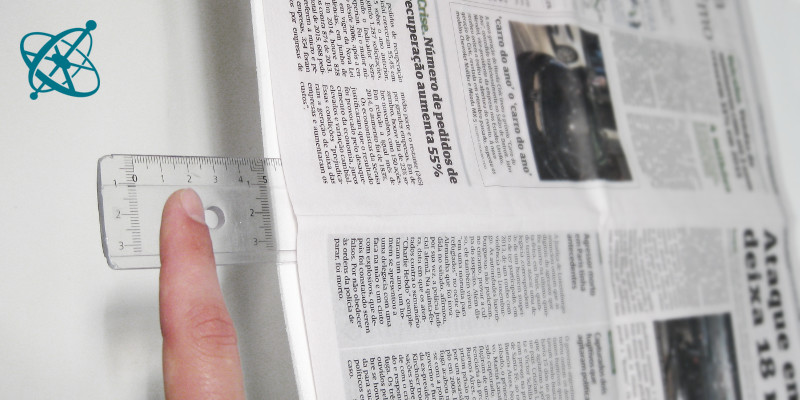
Tap on a ruler sticking out under a newspaper,…
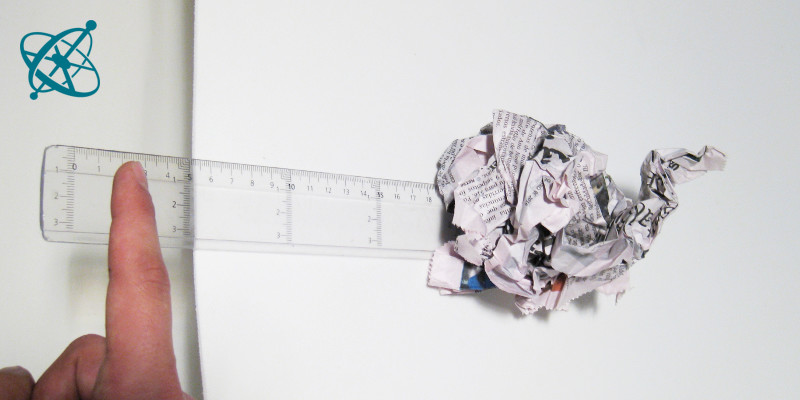
…and the same ruler with the newspaper scrambled to a ball.
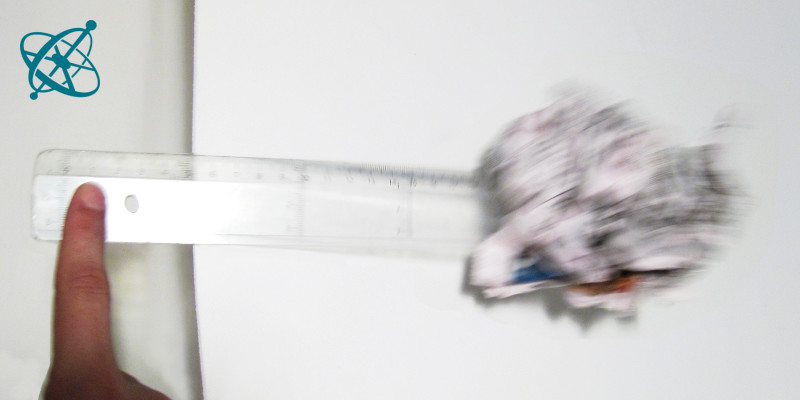
Do you note any difference?
Weight of air
Air has a low density, but there is a lot of it above us: it adds up to almost a ton of air on your shoulders. So why does the air not crush us? Let your students find out in this simple experiment.
If your time allows, you could combine this experiment with 'The invisible force within (a balloon)'.
Air exerts a significant pressure (force per area) on objects.
Air exerts a force in all directions, so that the net force on objects surrounded and filled with air is zero.
Ruler
Table
As seen in the photos, place a sheet of newspaper on the edge of the table and slide a ruler under it, so that about 1/4 of its length sticks out. Then tap with one finger on the ruler. Next scramble the paper to a ball, put it back on the ruler, and repeat the experiment.
1. What difference do you feel when tapping on the ruler in the two situations?
2. What force counters your force in the first case, i.e. why do the ruler and the paper stay on the table?
Does air have mass?
› Yes. It has mass and weight.
Does air only pressure downwards?
› No. The air exerts a pressure in all directions.
In what direction does the air exert force on the paper ball?
› The paper ball experiences the force from all sides, so that it practically cancels out (otherwise it would be blown from the ruler).
Is there also air pressing against the flat sheet of paper from below?
› Yes. However, if you tap the ruler to lift the paper, the air can't flow in under the sheet fast enough to cancel the pressure from above.
The air's weight on the newspaper exerts a force that one can feel when tapping on the ruler. If the same newspaper is scrambled to a ball (or you move the ruler so slow that air can enter below the newspaper), the air exerts force from all sides on it, including from below, and there is no net force holding the paper and the ruler down.
After you have explained the concept of air pressure and the unit Pascal (1 Pa = 1 N/m2), you can encourage your students to measure the atmospheric pressure with a barometer and calculate the weight of the air on the newspaper. They should find that the weight per square centimeter corresponds to about 1 kg, or more than a ton for an DIN A3 paper format.
